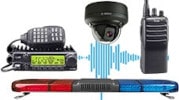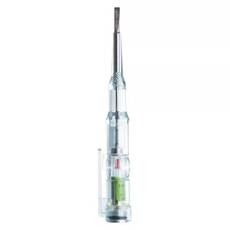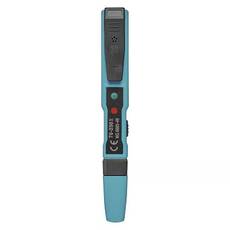- Special Offers
- Transceiver Radio
- Transceiver Accessory
- Antennas
- Antenna Accessory
- Cable
- Connector
- Installation Material
- Installation Tools
- Measuring Equipement
- Multidetector
- Voltage Tester
- Distance Meter
- Thermometer
- Voltmeter
- Multimeters
- Battery Tester
- Body Worn Camera
- Electrosmog
- Telephone
- Baby Monitor
- Fever Thermometer
- Radio Device
- Set-top Boxes
- Personal Protective Equipment
- Motorcycle Helmet Speaker
- Car Equipment
- Voltage Converter
- Dry Cell
- Battery
- Battery Charger
- Emergency Signal
- Amber Signal
- Sound Signal
- Light and Sound Signal Accessory
- Traffic Engineering
- LED Lamp
- Smart Home
- Mosquito Repellent Device
- Market - Other Products
- Discontinued Products
Pre-order (1)
Voltage Tester
If you like DIY or have a job involving electrical installation, you need to be prepared for every eventuality.It is possible that a cable break, a faulty fuse or a circuit breaker failure may cause the electrical service to be interrupted. In this case, we'll need our toolbox, one of the essential tools of which is a voltage tester to quickly locate the source of the fault. Read more...
Pre-order (1)
• AC voltage: 70 and 250 V, no contact
• DC voltage: 0 to 250 V, no contact
• AC and DC voltage: 0-250 V, 70-250 V
• Determination of polarity
• Signalling: optical
• Degree detection
• Connection: measurement
• Power supply: 2× 1.5 V LR41 (included)
• Contact-free measurement: source polarity, short-circuit, microwave emission check
• Frequency range: 0-60 Hz
• Two sensitivity settings
• AC voltage: 70 and 250 V, no contact
• DC voltage: 0 to 250 V, no contact
• Determination of polarity
• Signal: optical + acoustic
• Degree detection
• Power supply: 2× 1.5 V LR44 (included)
• Non-contact measurement: source polarity, short circuit, microwave emission check
• Frequency range: 0-60 Hz
• Two sensitivity settings
• AC and DC voltage: 0-250 V, 70-250 V
What is a phase finder, also known as a voltage tester?
It is a very simple device that indicates the presence or absence of DC or AC voltage without the need to directly contact the line. With some phasisceruzas, you can not only check that there is no voltage in the wires, but also determine accurate readings for AC or DC voltage. The voltage tester is also an essential tool for electricians because it not only helps us to find the source of the fault, but also to check the phase to see if safety is guaranteed when working on the electrical network.
How does voltage tester work?
When you touch the front end of the unipolar phase meter to the phase and place your finger on the other end, and there is voltage in the wire, a light comes on behind the tiny oval window on the side of the pencil that looks like a screwdriver. The principle of operation of the voltage tester is identical to that of the glow-light indicator. What does this mean? When there is sufficient voltage and current between the two ends of the voltage tester, the lamp emits an orange light. The single-pole voltage tester is so simple in design that there is nothing to break.
What types of voltage tsters are there?
There are different types of voltmeters. We distinguish between unipolar, bipolar or contactless voltage testers. The unipolar voltage tester in the form of a screwdriver is not able to give an accurate result, so it is only used to determine whether or not there is voltage in the wire. It is therefore mainly used for simple measurements at home, such as when installing a lamp or even a socket. In contrast, the bipolar voltmeter gives us a very accurate measurement result. It is therefore probably the best choice for professional work. The non-contact voltage tester can also test the cable through the insulating tape. That's why we often use a non-contact current probe to search for cable breaks. It is important to know that it only measures AC voltage, as it is capacitive and actually detects the magnetic field present with the AC voltage.
Properties of the single-pole voltage tester:
- The measuring tip can also be used as a screwdriver, but it should not be used to pull hard, really only used in an emergency
- Excellent for measuring voltage in sockets and connectors
- Very small and handy, fits in any pocket
- Provides instantaneous measurement results
Advantages of the bipolar voltage tester:
- Capable of measuring both DC and AC voltage
- Very accurate electrical measuring instrument
- Can be used to measure the voltage of electrical wiring in vehicles
- But also suitable as a tester for ordinary AAA and AA pencil batteries
- Also extremely easy to use
- Manufacturers often incorporate additional functions into this measuring device, such as testing circuit continuity or circuit breakers operated by fault current
- Unlike a unipolar phase shunt, this device does not allow current to pass through your body
What you should know about the contactless voltage tester?
- As the name suggests, it is non-contact, which makes it very safe to use
- Reliably detects the exact location of a cable break
- Only suitable for measuring and testing AC voltage
- Like the unipolar voltage tester, it helps to detect the presence of voltage in cable ends, sockets, switches, but is not suitable for checking the chargers of electronic devices
What to look out for when using a voltage tester?
Caution is very important when using a voltage tester. What does the phase finder show us? It indicates a closed circuit. This is dangerous because if it does not show a closed circuit, it does not mean that there is no voltage. The voltage tester works mostly at low voltages, which does not pose a danger to us. But only if the phase circuit is intact. If the meter is damaged or not working properly, serious accidents can happen, because with a unipolar phase meter, your body grounds the voltage.
DND Telecom Center offers a variety of manufacturers' voltage tester products for home or professional use.



